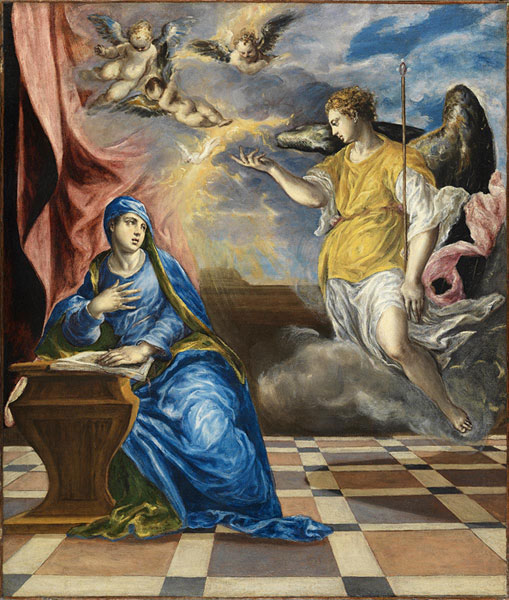
The Annunciation
El Greco painted this episode in the Virgin Mary’s life on numerous occasions, making it possible to follow the evolution of his pictorial style. This early canvas was in all likelihood painted during his time in Rome, yet the predominant influence is clearly Venetian. Titian’s presence is manifested in the use of light and colour, while the treatment of the archangel’s figure reminds us of the paintings of Veronese. The scene is framed by a series of architectural elements that delimit the space, such as the checkerboard tile floor, the drape and the balustrade, and crowned at the top by clouds through which we glimpse the rays of divine glory, with three cherubs and the dove of the Holy Ghost. El Greco borrowed elements from the Modena Triptych for this piece, but it is plain to see that his treatment of space and figures had progressed significantly from that earlier work. His skilful use of pigments and light and his mastery in depicting the folds of the drape provide a foretaste of the painter’s mature style.
Mª Eugenia Alonso
more information